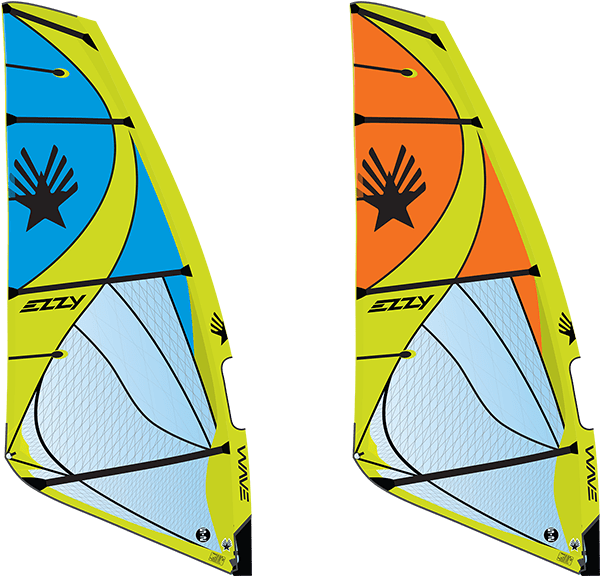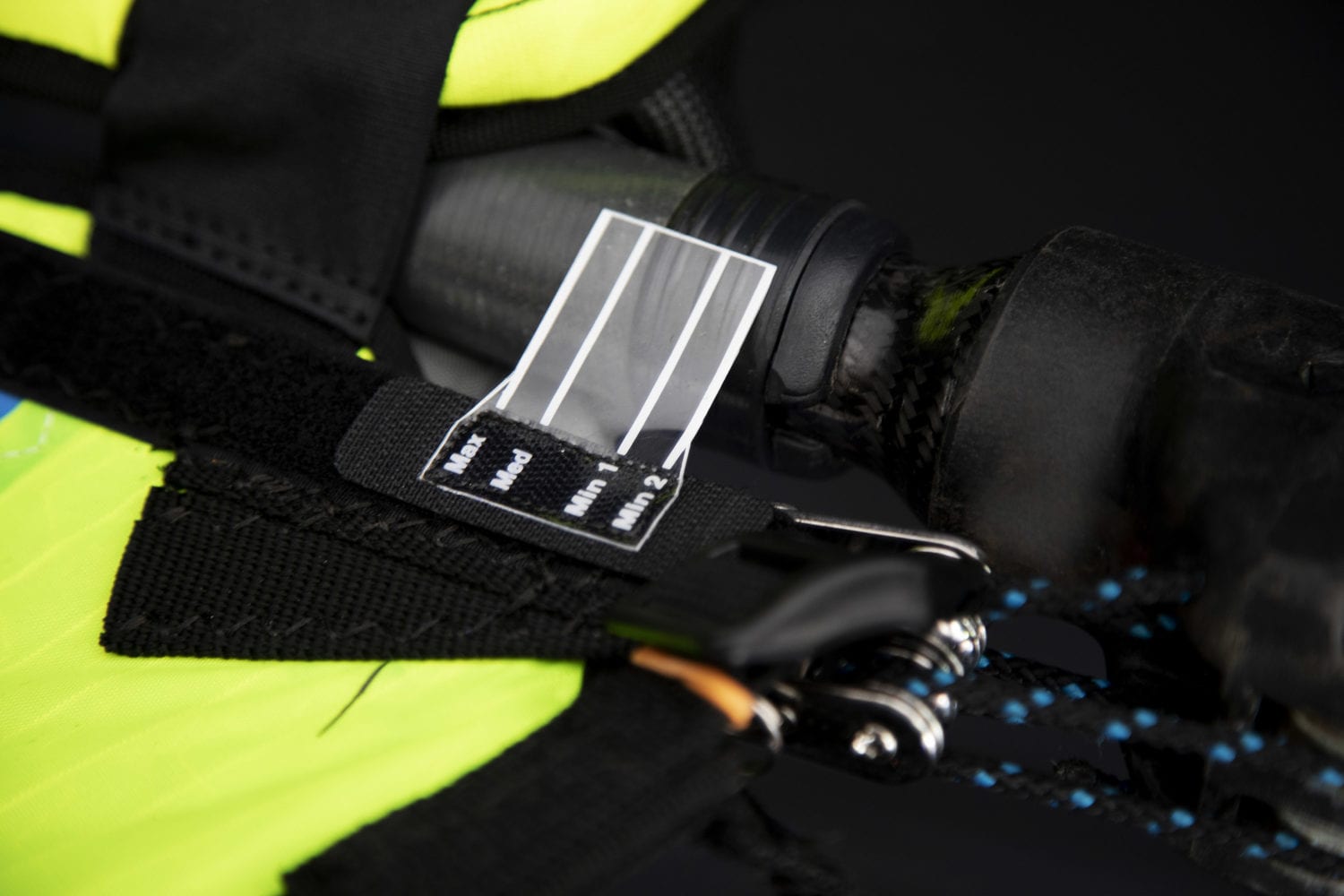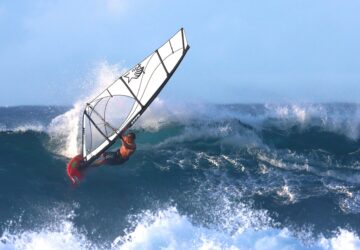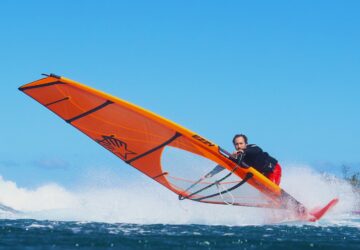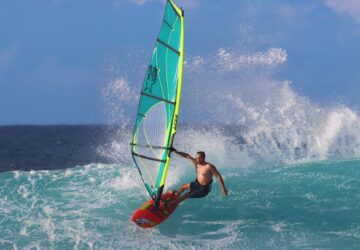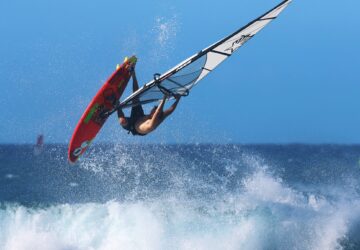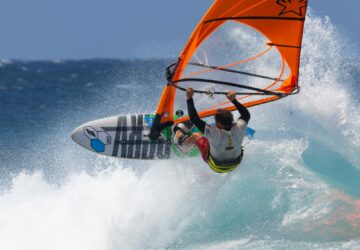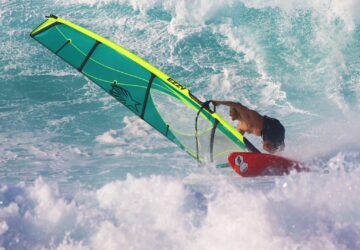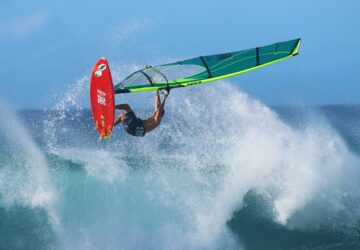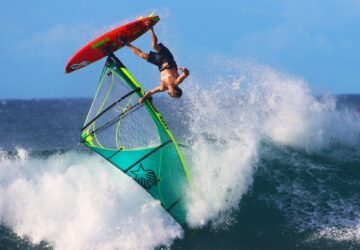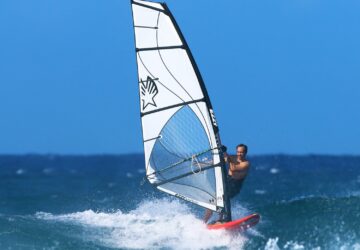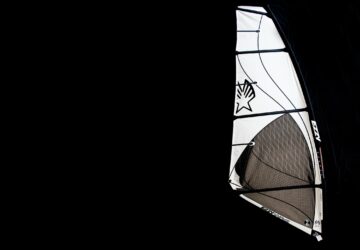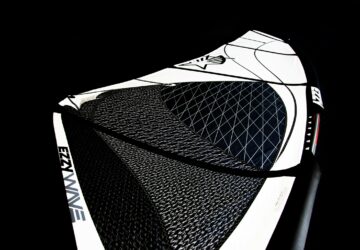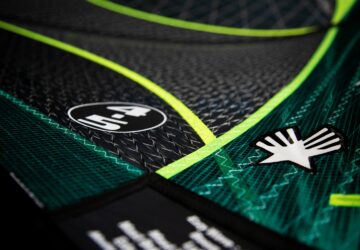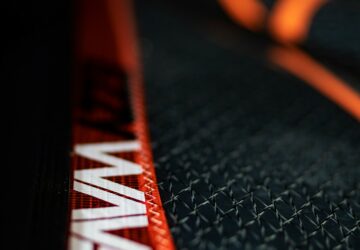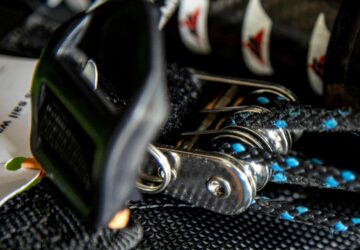Are you a wave sailor looking for a high-performance sail?
Do you want a sail that is lightweight and easy to manouver on the waves as well as in the jumps and jibes? What about easy to rig? And built to last?
We recommend the Ezzy Wave.
The Ezzy Wave carries the Ezzy traditions of easy handling and high quality while also being one of the lightest wave sails on the market, with the 4.7 weighing in under the 3kg mark.
When we introduced the first version of the Ezzy Wave in 2020, our goal with the sail was to make a sail that provides early planing and power for onshore conditions as well as dynamic maneuverability and handling for side-shore wave riding.
For 2023 and 2024, we introduce a new Ezzy Wave with changes across all sizes.
The Ezzy Wave makes us proud because it represents our lifetime of dedication to the craft of sailmaking and—most of all—our love of windsurfing.
Read more below.
WHAT IS NEW?
With 2 years of testing, we were able to make bigger changes than normal for the 2023/2024 Ezzy Wave:
- David refined the luff curve to make sure that the sail's power is in the same place across every size.
- The battens are slightly pulled back from the luff. This is very subtle, so you probably will not notice it when you first look at the sail. The effect is that the sail depowers and flips more easily--a subtle difference but with a big upside that you can really feel.
- The biggest visual change is in the outline on the smaller sails. The 4.0 and down have an extended clew. The biggest advantage is better stability, which is really noticeable for jumping.
- All sizes have a bigger window for more visibility. You'll be surprised how much this matters!
- The bigger sizes have a more direct power delivery and get going faster when the wind is light.
GRAHAM EZZY QUOTE
"The Ezzy Wave is so much better than my old sails that I feel like I have new boards, even though the boards are the same. These sails are so much lighter compared to the Elite, and when a gust hits, the sail simply accelerates without feeling heavy in the hands as it fills up with wind. This sail is powerful enough to get around in strong currents and onshore winds but also light and maneuverable enough to move around effortlessly on the wave—for onshore, sideshore, down-the-line.
The Ezzy Wave is the best wave sail that I have ever used, and it motivates me even more to go on the water because I’m sailing better."-GRAHAM EZZY
IS THE EZZY WAVE LIGHTWEIGHT?
The Ezzy Wave is one of the lightest wave sails available, with the 4.7 weighing under 3kg. The Ezzy Wave is even lighter than the Taka. Compared to the Elite, the weight reduction comes from a more advanced design of the clew reinforcement and a Spectra-reinforced X-ply window instead of vinyl.
WHAT DOES QUALITY MEAN?
Quality means a sail that you can trust. When you go out on that big day—that day where you feel excitement in the back of your throat—you can trust your sail, and you can focus on your windsurfing. Quality means that when you're ready for new sails, you can sell your used sails to help with new purchase.
Quality is the core of the Ezzy philosophy.
Quality is a 2-step process. The first step is making sure that the Ezzy Wave is designed to be a quality wave sail that can withstand the daily beatings that a hardcore wave sail must endure, like big waves, sharp rocks, and coral reefs. The Ezzy Wave comes from a lifetime of sailmaking knowledge applied to get maximum strength while reducing weight. The sail needs to be designed well and to be built with the right materials. To achieve this, we work with our suppliers to have innovative material that is both strong as well as lightweight. Sometimes, we want something better than anything that exists on the market. For example, years ago, we wanted a pulley on our sails, but none of the pulleys on the market were good enough—mostly they had too much friction—so we designed, molded, and manufactured our own pulley system that you now find on the Ezzy Wave.
The second part of ensuring quality is in the actual production process—the best designs don't mean anything if they are produced poorly. Most sailbrands do not own their own manufacturing, rather they work wtih large factories in Asia. However, these factories could not provide the quality that David Ezzy insists upon. So, David built his own Ezzy Sails Factory in 1994 where quality is an important part of the production process from start to finish. When raw material arrives, it goes through a series of tests to make sure it is up to standard. At each step of the way during a sail's construction, there are double and triple checks. Once the sail is finally complete, the sail goes to the rigging station where it is rigged and closely inspected. Every single Ezzy sail is rigged like this in the factory, and after the inspection, the battens are tuned and the rigging system is calibrated so that when you unroll a brand new Ezzy Wave, you can expect it to be perfect and ready to sail.
HOW DOES THE CALIBRATED RIGGING SAVE YOU TIME?
When the conditions are good, you want to get on the water as fast as possible and have your sail rigged perfectly. Traditionally, this is a tradeoff. But with the Ezzy Wave's calibrated rigging, you can tune your downhaul in seconds. Each and every sail is rigged and calibrated in the Ezzy Sails factory. Simply, downhaul till the bottom of your mast lines up with the desired setting: Max, Mid, Min 1, or Min 2 (for extra light winds).
WHy do the 5.8 and 6.3 have 5 battens instead of 4, like all the other sizes?
"When I set out to design the Ezzy Wave, my goal was to make the best sail possible in each individual size. During the development, I found that the 5.8 felt lighter and more stable with 5 battens than it did with 4 battens. I found that all the sails need to have a roughly similar distance between the battens, which means that the 5.8 neeeded another batten. If I made the 5.8 with 4 battens, it would compromise its performance.
The 5 batten 5.8 Ezzy Wave is actualy lighter than the 2019, 4-batten 5.7 Elite. And the Ezzy Wave is more stable and balanced as well.
And when we introduced the 6.3, the same principles applied." - David Ezzy
EZZY WAVE SPECS
| EZZY WAVE | Luff | Luff | Boom | Battens | Ezzy Mast | Weight |
| Size (sq.m.) | Min (cm) | Max (cm) | Min-Max (cm) | Bottom/Top | Kilograms | |
| 2.8 | 325 | 329 | 127-137 | 4 | 315/340 | 2.22 kg |
| 3.0 | 338 | 342 | 139-149 | 4 | 315/340 | 2.30 kg |
| 3.4 | 351 | 355 | 139-149 | 4 | 340/340 | 2.40 kg |
| 3.7 | 364 | 368 | 145-155 | 4 | 340/340 | 2.51 kg |
| 4.0 | 372 | 376 | 145-155 | 4 | 340/370 | 2.75 kg |
| 4.2 | 380 | 384 | 145-155 | 4 | 370/370 | 2.75 kg |
| 4.5 | 389 | 393 | 150-160 | 4 | 370/370 | 2.85 kg |
| 4.7 | 397 | 401 | 154-164 | 4 | 370/400 | 2.93 kg |
| 5.0 | 407 | 411 | 159-169 | 4 | 370/400 | 3.01 kg |
| 5.2 | 415 | 419 | 163-173 | 4 | 400/400 | 3.11 kg |
| 5.5 | 423 | 427 | 168-178 | 4 | 400/430 | 3.18 kg |
| 5.8 | 438 | 442 | 168-178 | 5 | 430/430 | 3.48 kg |
| 6.3 | 454 | 458 | 178-188 | 5 | 430/430 | 3.65 kg |
Note on Ezzy Masts
The recommended masts found in the Sail Specs refer to the Ezzy Ho'okipa masts and the Legacy masts. By using the recommended Ezzy mast in your sail, not only do you access 100% of the sail's performance but you also can use the calibrated rigging without any hassle.
Ezzy Sails are designed to be used with Ezzy Masts, but the sails will also work with a variety of other masts (RDM and SDM). Ezzy mast bend curves are constant curve with tip: 75% to 79% and base: 62% to 65%. Note: this is not carbon content. This is percentage bend relative to the midpoint bend.
The Ezzy Hookipa Mast
HOW DOES CALIBRATED RIGGING WORK?
Every Ezzy Wave is calibrated in the factory so that you can tune your sail accurately in seconds. If you have the recommended Ezzy mast, all you need to do is:
- Downhaul until the bottom of the mast lines up with the amount of tension you want, as indicated by the gauge on the sail. Max is for stronger wind, and Min is for lighter winds.
- That's it! Get on the water.
What if you don't have the recommended Ezzy mast? No problem. Follow these steps to calibrate your sail yourself:
- Set your mast extension to the medium extension height.
- Slide your mast into the luff sleeve, making sure the mast sits above the battens. Do not apply any outhaul.
- Begin downhauling slowly while observing the front of the foot batten. Continue downhauling just until the front of the foot batten “pops” to the side of the mast and then stop downhauling.
- This is your medium wind setting.
- Now, remove the downhaul gauge from the velcro and move it so that the medium mark lines up with the bottom of your mast.
- The downhaul gauge is set. From now on, just downhaul until the gauge lines up with the bottom of your mast.

